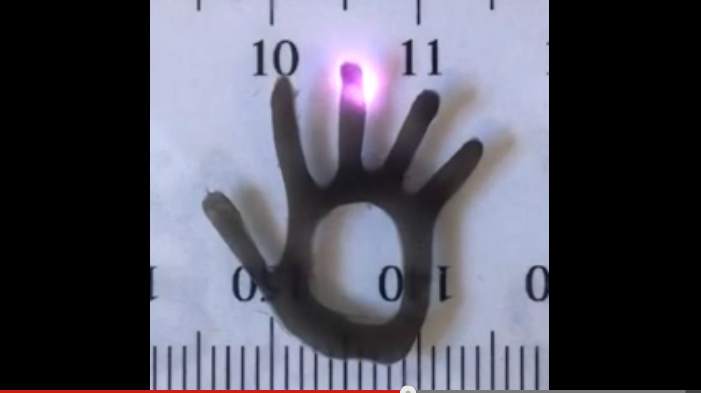Gel Offers New Possibilities for 'Soft' Robots

A new material controlled by light may help scientists build better soft-bodied robots.
The developers of the gel say they were inspired by the way a plant grows to face the sunlight. Unlike plants, though, the gel can be made to flex and move almost instantaneously.
The UC Berkeley scientists created the gel using graphene and a synthetic protein similar to elastin, which is found in humans' blood vessels, skin and more.
The synthetic elastin, created from genetically engineered bacteria, absorbs water at room temperature, but at higher temperatures it expels the water and shrinks. [Read also: " Soft Robots Make World Safer for Humans"]
Graphene produces heat when exposed to near-infrared light. Together, the two materials make a light-controlled gel, said professor Seung-Wuk Lee of UC Berkeley's department of bioengineering. "The graphene is heated by the light, and then the elastin is responding to the heat induced by the light."
By making parts of the new gel less porous, the team could control how the material bends. The more porous side absorbed and expelled water faster, making the material shrink unevenly, which resulted in a gel that could bend in a predictable, repeatable way.
The material by itself — which Lee and his team have only thus far assembled into tiny structures — does not a robot make. So far, the "robots" built include a 0.4-inch (1 cm) "worm" that crawls when exposed to the infrared laser, and a roughly 0.8-inch (2 cm) hand that bends its fingers. But the proof of concept could someday be used to build complex robots, such as one that's shaped like and moves like an octopus, Lee said.
Get the world’s most fascinating discoveries delivered straight to your inbox.
The octopus example is an apt one. For now, since the new material needs to absorb and expel water to flex and stretch, the experiments with the material were conducted while it was submerged.
If octobots seem farfetched, Lee suggests that the new material could be used for drug delivery. Perhaps the material could soak up a liquid drug, injected into a patient's bloodstream, and then squeezed out of the material's pores at the right place. Since infrared light penetrates skin, it's not impossible to imagine in the future.
Or, Lee said, why not use the shape-changing gel as a replacement for lost limbs? "We could replace our tissues" with a light-controlled gel, he said.
The study was published in the journal Nano Letters earlier this month.
Rachel is a writer and editor based in Washington, D.C., who covers a range of topics for Live Science, from animals and global warming to technology and human behavior. Rachel also contributes to National Geographic News, Smithsonian Magazine and Scientific American, and she is currently a senior editor at Next City, a national urban affairs magazine. She has an English degree with a journalism concentration from Adelphi University in New York.



